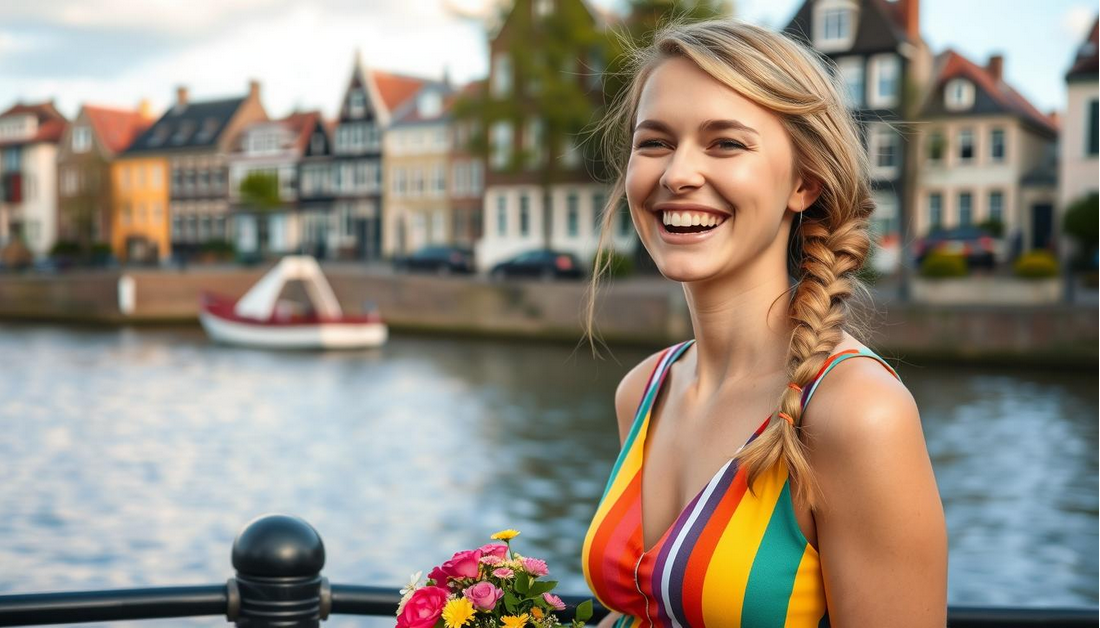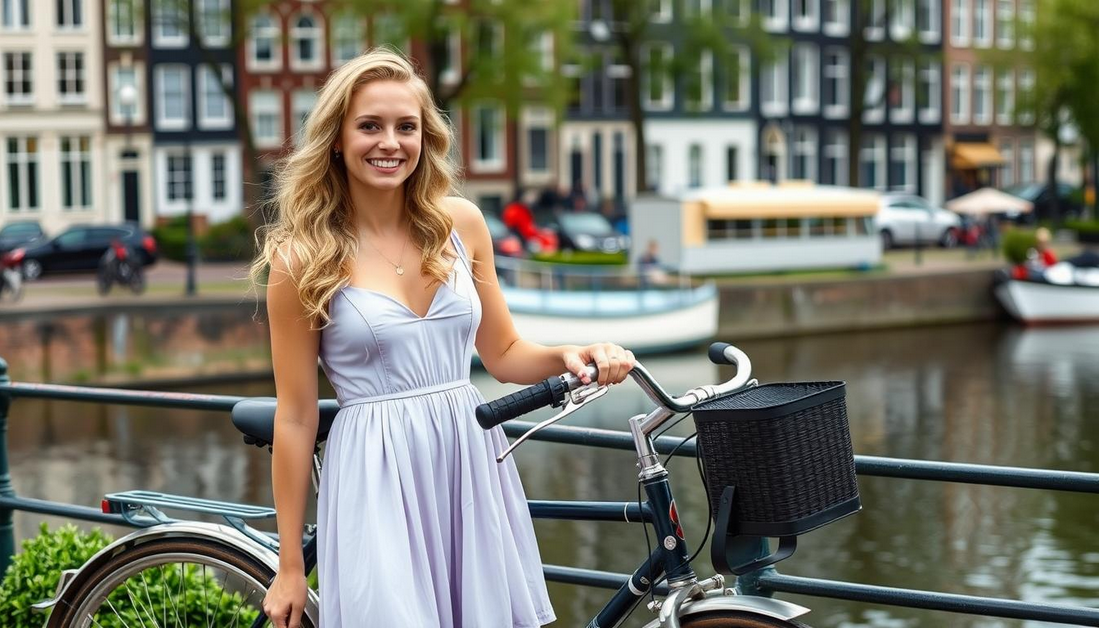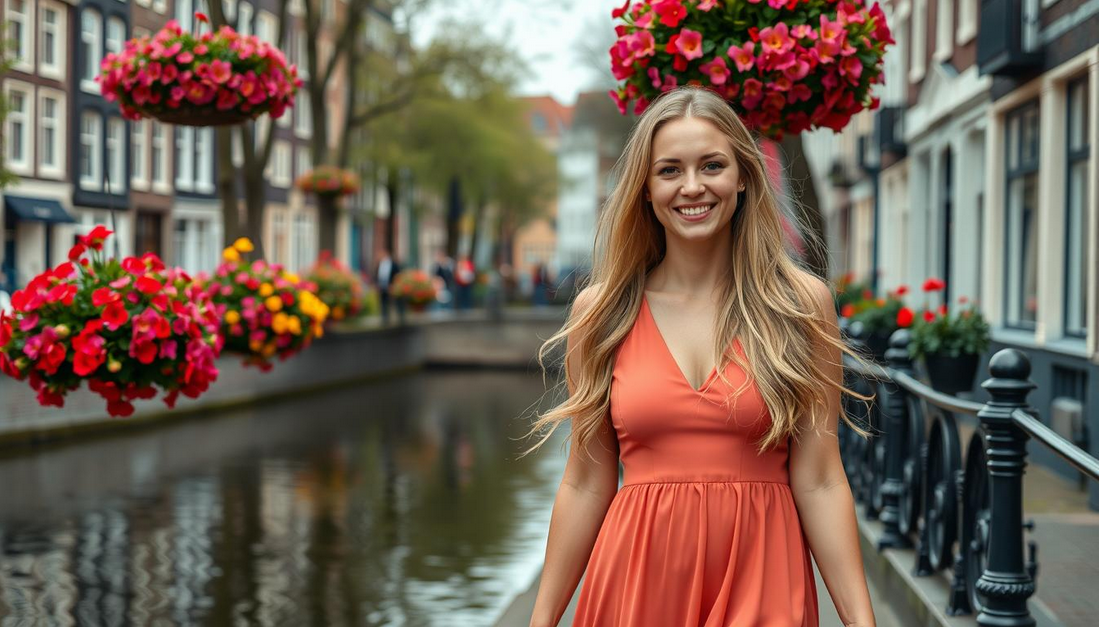India customers to view on amazon.in
Amsterdam’s Canals: Glide Through Golden History
Imagine cruising through a city where historic charm meets vibrant culture. Amsterdam’s Canals offer a unique perspective on the city’s Golden History.
- The Birth of Amsterdam’s Iconic Waterways
- From Marshland to Maritime Powerhouse
- Engineering Marvels of the 17th Century
- The Canal Belt: A Planned Urban Expansion
- Amsterdam’s Canals: Glide Through Golden History Today
- The Three Main Canals: Herengracht, Keizersgracht, and Prinsengracht
- Smaller Canals and Their Unique Charm
- Modern Life Along Historic Waterways
- The Golden Age Legacy: How Canals Shaped a Nation
- Trade, Wealth, and Water: The Dutch Formula for Success
- Famous Merchants and Their Canal-Side Mansions
- Cultural Reflections: Art and Literature Inspired by the Canals
- UNESCO World Heritage: Preserving Amsterdam’s Aquatic Legacy
- The 2010 Recognition and Its Significance
- Conservation Efforts and Challenges
- What Makes Amsterdam’s Canal Ring Unique Globally
- Exploring the Canal Belt: Neighborhood by Neighborhood
- The Jordaan: Artistic Soul of the Canals
- The Nine Streets (De Negen Straatjes): Shopping Paradise
- Eastern Canal Belt: Elegant Mansions and Museums
- Outlying Canals: Hidden Gems Off the Tourist Path
- Canal Cruise Experiences: Choosing Your Perfect Voyage
- Classic Daytime Tours: The Essential Amsterdam Experience
- Evening and Illuminated Night Cruises
- Specialty Cruises: Food, Wine, and Festival Tours
- Private and Luxury Canal Experiences
- Eco-Friendly Canal Tours: Sustainable Sightseeing
- Seasonal Splendors: When to Experience Amsterdam’s Waterways
- Spring: Tulip Season and King’s Day Celebrations
- Summer: Peak Season Energy and Festivals
- Autumn: Golden Light and Fewer Crowds
- Winter: Christmas Lights and Potential Ice Skating
- Architecture Along the Canals: Stories in Stone and Brick
- The Narrow Canal Houses: Form Follows Function
- Gables, Hooks, and Pulleys: Practical Design Elements
- Famous Architectural Landmarks Along the Waterways
- Houseboats: Floating Homes with Character
- Practical Tips for Canal Explorers
- Best Photography Spots and Times
- Canal-Side Dining and Drinking Recommendations
- Cycling Alongside the Waterways Safely
- Etiquette and Safety on and Around the Canals
- Booking Canal Tours: Tickets, Timing, and What to Bring
- Conclusion: The Enduring Magic of Amsterdam’s Waterways
- FAQ
- What is the best time to take an Amsterdam canal cruise?
- How long does a typical Amsterdam canal cruise last?
- Are Amsterdam canal cruises suitable for children?
- Can I rent a boat to explore Amsterdam’s canals on my own?
- What are some must-see attractions along Amsterdam’s canals?
- Are there any eco-friendly canal tour options in Amsterdam?
- Can I book a private canal cruise in Amsterdam?
- What is the significance of Amsterdam’s Canal Ring being a UNESCO World Heritage Site?
- How do I get to the starting point of most Amsterdam canal cruises?
- Are Amsterdam’s canals wheelchair accessible?

As you embark on an Amsterdam boat tour or Amsterdam canal cruise, you’ll be treated to breathtaking views of the city’s architectural heritage.
The canals, a testament to Amsterdam’s rich past, invite you to explore the city’s hidden gems and experience its captivating atmosphere.
Key Takeaways
- Discover Amsterdam’s rich history through its canals
- Experience the city’s vibrant culture on a boat tour
- Admire the architectural heritage of Amsterdam’s canals
- Explore the city’s hidden gems on a canal cruise
- Enjoy the unique perspective offered by Amsterdam’s waterways
The Birth of Amsterdam’s Iconic Waterways
Amsterdam’s canals, a hallmark of the city’s landscape, were born out of necessity and ingenuity. The transformation of Amsterdam during the 17th century, particularly the construction of its iconic canal belt, was a pivotal moment in the city’s history.

From Marshland to Maritime Powerhouse
The history of Amsterdam’s canals begins with the city’s humble beginnings as a marshland settlement. As Amsterdam grew into a maritime powerhouse, the need for expanded trade and defense capabilities became apparent. The construction of canals was a strategic response to these needs, facilitating trade and providing a unique urban landscape.
Engineering Marvels of the 17th Century
The 17th century was a period of significant engineering feats in Amsterdam. The construction of the canal belt required innovative solutions to the city’s soft soil and waterlogged terrain. The result was a testament to Dutch ingenuity, turning a potential weakness into a defining feature of the city.
The Canal Belt: A Planned Urban Expansion
The canal belt, a masterpiece of urban planning, was designed to accommodate the growing population and facilitate trade. This planned expansion transformed Amsterdam into one of the most sophisticated cities of its time, setting a precedent for urban development across Europe.
The legacy of Amsterdam’s canals is a reflection of the city’s Dutch Golden Age heritage, a period that saw significant cultural, economic, and scientific advancements. Today, the canals stand as a testament to Amsterdam’s rich history and its status as a maritime powerhouse.
Amsterdam’s Canals: Glide Through Golden History Today
Amsterdam’s canals, a UNESCO World Heritage Site, remain a vibrant part of the city’s fabric, weaving together past and present. The canals are not just relics of a bygone era but are thriving elements of modern Amsterdam.

The Three Main Canals: Herengracht, Keizersgracht, and Prinsengracht
The three main canals, Herengracht, Keizersgracht, and Prinsengracht, form the heart of Amsterdam’s canal system. Each has its unique character and history. Herengracht, or the “Gentlemen’s Canal,” is known for its elegant gables and prestigious addresses.
| Canal Name | Notable Features | Historical Significance |
|---|---|---|
| Herengracht | Elegant gables, prestigious addresses | Named after the Dutch word for “gentlemen” |
| Keizersgracht | Wide and straight, Anne Frank House | Named after the Holy Roman Emperor |
| Prinsengracht | Busiest and most commercial, houseboats | Named after Prince William of Orange |
Smaller Canals and Their Unique Charm
Beyond the main canals, Amsterdam’s smaller waterways offer a glimpse into the city’s lesser-known corners. These canals are lined with charming houses, quaint bridges, and picturesque gardens.
Modern Life Along Historic Waterways
Modern life in Amsterdam coexists harmoniously with its historic canals. Residents and businesses thrive along the waterways, with many houses and buildings dating back centuries. The canals are also a hub for cultural and social activities, hosting various events throughout the year.
The blend of old and new is evident in the way traditional architecture stands alongside modern amenities, creating a unique and vibrant urban landscape.
The Golden Age Legacy: How Canals Shaped a Nation
Amsterdam’s canals were the lifeblood of the Dutch Golden Age, fueling trade and cultural advancements. The city’s waterways played a pivotal role in establishing Amsterdam as a major maritime power, facilitating the exchange of goods, ideas, and cultures.
Trade, Wealth, and Water: The Dutch Formula for Success
The canals were instrumental in Amsterdam’s rise to commercial prominence. They enabled the efficient transportation of goods, connecting the city to the global market. The Dutch West India Company and the Dutch East India Company, two of the most powerful trading companies of the time, were headquartered in Amsterdam, further solidifying the city’s position as a hub of international trade.
| Company | Year Established | Primary Trade Routes |
|---|---|---|
| Dutch West India Company | 1621 | Africa, Americas |
| Dutch East India Company | 1602 | Asia, Indian Ocean |
Famous Merchants and Their Canal-Side Mansions
Wealthy merchants built grand canal-side mansions, showcasing their prosperity and status. These architectural marvels, with their ornate gables and intricate designs, still line the canals today, serving as a testament to Amsterdam’s rich history. Notable merchants like the Trip family, who made their fortune in the arms trade, built impressive houses that reflected their wealth.

Cultural Reflections: Art and Literature Inspired by the Canals
The canals inspired a wealth of cultural works. Artists like Rembrandt and Vermeer depicted the city’s waterways in their paintings, capturing the beauty and vibrancy of Amsterdam’s urban landscape. Literary works also reflected the significance of the canals, with authors often using them as settings or metaphors in their writing.
In conclusion, Amsterdam’s canals were not just a practical solution for transportation; they were the backbone of the Dutch Golden Age, driving economic growth, cultural development, and leaving a lasting legacy that continues to inspire and captivate people to this day.
UNESCO World Heritage: Preserving Amsterdam’s Aquatic Legacy
In 2010, Amsterdam’s historic canal system earned the prestigious UNESCO World Heritage designation. This recognition not only highlights the city’s rich cultural heritage but also underscores the importance of preserving its unique waterways for future generations.
The 2010 Recognition and Its Significance
The UNESCO World Heritage designation is a testament to Amsterdam’s Canal Ring’s architectural, historical, and cultural significance. It acknowledges the canal system’s role as a masterpiece of urban planning and a symbol of the city’s Golden Age prosperity.
Conservation Efforts and Challenges
Preserving Amsterdam’s Canal Ring involves ongoing conservation efforts, including maintaining the historic architecture, managing water quality, and balancing tourism with local life. Challenges include addressing the impacts of climate change and ensuring the structural integrity of ancient buildings.
What Makes Amsterdam’s Canal Ring Unique Globally
Amsterdam’s Canal Ring is distinguished by its harmonious blend of medieval and Renaissance architecture, its intricate network of waterways, and its reflection of the Dutch Golden Age’s cultural and economic achievements. This uniqueness is preserved through continuous conservation and management efforts.
| Year | Event | Significance |
|---|---|---|
| 2010 | UNESCO World Heritage Designation | Recognition of cultural and historical importance |
| 17th Century | Construction of the Canal Ring | Urban planning and architectural innovation |

Exploring the Canal Belt: Neighborhood by Neighborhood
Amsterdam’s Canal Belt is a treasure trove of unique neighborhoods, each with its own character and charm. As visitors explore this historic area, they can experience a range of cultures, architectural styles, and local traditions.
The Jordaan: Artistic Soul of the Canals
The Jordaan district is known for its artistic vibe, narrow streets, and picturesque canals. This neighborhood is a haven for art lovers, with numerous galleries and studios showcasing local talent. Visitors can stroll along the charming streets, admire the beautiful architecture, and soak up the creative atmosphere.

The Nine Streets (De Negen Straatjes): Shopping Paradise
The Nine Streets area is a shopper’s delight, offering a variety of boutique stores, vintage shops, and specialty boutiques. This charming neighborhood is perfect for those looking for unique souvenirs or gifts. Visitors can browse the quaint streets, discover local designers, and enjoy the lively atmosphere.
Eastern Canal Belt: Elegant Mansions and Museums
The Eastern Canal Belt is characterized by its elegant mansions, historic buildings, and world-class museums. This sophisticated neighborhood is home to many of Amsterdam’s cultural institutions, including the famous Hermitage Museum. Visitors can admire the stunning architecture, explore the museums, and enjoy the tranquil atmosphere.
Outlying Canals: Hidden Gems Off the Tourist Path
Beyond the main canals, Amsterdam’s outlying waterways offer a glimpse into local life. These lesser-known areas are perfect for those seeking a more authentic experience. Visitors can explore the quieter neighborhoods, enjoy the scenic views, and discover hidden gems that are off the beaten path.
| Neighborhood | Main Attractions | Best Time to Visit |
|---|---|---|
| The Jordaan | Art galleries, narrow streets | Afternoon |
| The Nine Streets | Boutique shops, vintage stores | Morning |
| Eastern Canal Belt | Museums, elegant mansions | Evening |
Canal Cruise Experiences: Choosing Your Perfect Voyage
From classic daytime tours to luxurious private cruises, Amsterdam’s canal cruise experiences cater to all preferences. Whether you’re looking for a relaxing ride along the historic canals or an informative tour about the city’s rich history, there’s a canal cruise option for you.

Classic Daytime Tours: The Essential Amsterdam Experience
A classic daytime canal tour is a must-do when visiting Amsterdam. These tours provide a comprehensive overview of the city’s history, architecture, and cultural significance. You’ll glide along the Herengracht, Keizersgracht, and Prinsengracht, admiring the beautiful canal houses and learning about their historical context.
Evening and Illuminated Night Cruises
For a more romantic experience, consider an evening or illuminated night cruise. The canals take on a magical quality as the city lights reflect off the water, creating a serene and enchanting atmosphere. Many evening cruises also offer dinner or drinks on board, adding to the ambiance.
Specialty Cruises: Food, Wine, and Festival Tours
Amsterdam also offers specialty cruises that cater to specific interests. These can include food and wine tours, where you can sample local cuisine while cruising, or festival tours that coincide with Amsterdam’s various cultural events throughout the year.
- Food and wine cruises
- Festival and event cruises
- Themed cruises, such as historical or architectural tours
Private and Luxury Canal Experiences
For those seeking a more personalized experience, private and luxury canal cruises are available. These can range from luxurious boats with high-end amenities to more intimate, small-boat experiences.
Small Boat Rentals
One option for a private experience is renting a small boat. This allows you to explore the canals at your own pace, stopping at points of interest or simply enjoying the scenery.
Captain-Your-Own Options
For the more adventurous, some companies offer captain-your-own boat experiences. This is a unique way to see Amsterdam, allowing you to navigate the canals yourself.

Eco-Friendly Canal Tours: Sustainable Sightseeing
For the environmentally conscious, eco-friendly canal tours are becoming increasingly popular. These tours use boats powered by sustainable energy sources, minimizing the environmental impact while still offering a great way to see the city.
With so many options available, you’re sure to find a canal cruise experience that suits your preferences. Whether you’re interested in history, looking for a romantic evening, or simply want to explore Amsterdam from a different perspective, there’s a canal cruise waiting for you.
Seasonal Splendors: When to Experience Amsterdam’s Waterways
Amsterdam’s canals are a year-round attraction, with each season bringing its own unique charm to the city’s waterways. Whether you’re interested in history, culture, or simply enjoying the beauty of the Netherlands, there’s a perfect time to visit.
Spring: Tulip Season and King’s Day Celebrations
Spring is a vibrant time in Amsterdam, with tulips blooming along the canals and the city’s famous King’s Day celebrations taking place on April 27th. Visitors can enjoy the colorful markets, lively street parties, and the general festive atmosphere that fills the city.
Summer: Peak Season Energy and Festivals
Summer brings peak tourist season to Amsterdam, with warm weather and long days allowing for extended exploration of the city’s canals. The city hosts numerous festivals and events, including open-air concerts and cultural celebrations.
Autumn: Golden Light and Fewer Crowds
Autumn in Amsterdam offers a more subdued experience, with the summer crowds dissipating and a golden light casting a warm glow over the canals. It’s an ideal time for a more relaxed exploration of the city’s waterways.
Winter: Christmas Lights and Potential Ice Skating
Winter transforms Amsterdam into a magical landscape, with Christmas lights adorning the canals and the possibility of ice skating on the frozen waterways. Visitors can enjoy the cozy atmosphere, festive markets, and the city’s renowned canal cruises at night.
Each season in Amsterdam offers a unique perspective on the city’s canals, ensuring that visitors can experience the beauty and charm of the waterways in a way that suits their preferences.
Architecture Along the Canals: Stories in Stone and Brick
The unique architecture along Amsterdam’s canals is a blend of functionality and aesthetic appeal, reflecting the city’s heritage. The canal houses, with their characteristic gables and narrow facades, are not just visually striking but also tell the story of Amsterdam’s historical development.
The Narrow Canal Houses: Form Follows Function
Amsterdam’s canal houses are renowned for their narrow, tall designs. This architectural style was a response to the city’s land scarcity and taxation policies, which were based on the width of the houses. As a result, the houses were built to be narrow and deep, with ornate gables facing the canals, creating a picturesque and uniform streetscape.

Gables, Hooks, and Pulleys: Practical Design Elements
The gables of Amsterdam’s canal houses are not just decorative; they were designed with practicality in mind. The gabled facades often featured hooks and pulleys, which were used to hoist goods and furniture into the upper floors, minimizing the need for internal staircases. This design element reflects the historical importance of trade and commerce in Amsterdam.
Famous Architectural Landmarks Along the Waterways
Amsterdam’s canals are home to numerous architectural landmarks, including the Anne Frank House and the Magere Brug (Skinny Bridge). These landmarks not only add to the city’s cultural heritage but also attract visitors from around the world.
Houseboats: Floating Homes with Character
In addition to the traditional canal houses, Amsterdam is also known for its houseboats, which line some of the city’s waterways. These floating homes offer a unique living experience and contribute to the city’s eclectic architectural landscape.
| Architectural Feature | Description | Significance |
|---|---|---|
| Narrow Facades | Houses built to be narrow and deep | Response to land scarcity and taxation |
| Gabled Facades | Ornate gables with hooks and pulleys | Practical design for trade and commerce |
| Houseboats | Floating homes on the canals | Unique living experience and cultural heritage |
Practical Tips for Canal Explorers
As you prepare to explore Amsterdam’s enchanting canals, here are some practical tips to enhance your experience. Whether you’re interested in photography, dining, or simply taking in the sights, these insider tips will help you make the most of your visit.
Best Photography Spots and Times
Amsterdam’s canals are a photographer’s paradise, with their picturesque bridges, historic architecture, and vibrant atmosphere. For the best shots, try visiting during the golden hour, just before sunrise or after sunset, when the soft light adds a warm glow to the scene. Some of the top photography spots include the Magere Brug (Skinny Bridge), the Blauwbrug (Blue Bridge), and the charming Prinsengracht canal.
Canal-Side Dining and Drinking Recommendations
After working up an appetite exploring the canals, be sure to stop for a meal or snack at one of the many canal-side cafes or restaurants. Some top recommendations include De Kas, a former greenhouse turned restaurant serving seasonal dishes, and Café Papeneiland, a cozy spot with a rich history dating back to the 17th century. For a more casual experience, grab a coffee or ice cream at one of the many street vendors or cafes along the canals.
Cycling Alongside the Waterways Safely
Cycling is a great way to explore Amsterdam’s canals, with many bike paths running alongside the waterways. To stay safe, be sure to follow local traffic rules and keep an eye out for pedestrians and other cyclists. Some of the best cycling routes include the Amsterdamse Bos (Amsterdam Forest) and the Nieuwe Meer area, both of which offer scenic views of the canals and surrounding countryside.
Etiquette and Safety on and Around the Canals
When exploring Amsterdam’s canals, be sure to follow local etiquette and safety guidelines. This includes staying at least a meter away from the canal edges, not leaning over the bridges, and being mindful of boat traffic. Additionally, be respectful of local residents and businesses, keeping noise levels down and avoiding littering.
Booking Canal Tours: Tickets, Timing, and What to Bring
For a unique perspective on Amsterdam’s canals, consider booking a guided tour. When booking, be sure to check the timing and duration of the tour, as well as what’s included (such as food, drinks, or special activities). Some popular tour operators include Stromma and Blue Boat Company. Be sure to arrive early and bring essentials like sunscreen, a camera, and comfortable clothing.
Conclusion: The Enduring Magic of Amsterdam’s Waterways
Amsterdam’s canals are more than just a picturesque backdrop; they are the lifeblood of the city, weaving together history, culture, and daily life. As you glide through Amsterdam’s waterways, the enduring magic of this unique city unfolds before your eyes. The city’s canal heritage is a testament to its rich past, from the grandeur of the Golden Age to the modern vibrancy of its neighborhoods.
Whether you’re exploring the charming Jordaan, admiring the elegant mansions along Herengracht, or simply taking in the sights on an Amsterdam sightseeing by boat tour, the canals offer a captivating experience. As the seasons change, Amsterdam’s waterways adapt, offering a fresh perspective with each visit. The city’s ability to balance preservation with modern life is a key part of its allure, making Amsterdam’s canals a timeless attraction.
As you leave Amsterdam, the memories of its canals will linger, a reminder of the city’s enchanting blend of history, culture, and beauty. Amsterdam’s waterways invite you to return, to rediscover the magic that makes this city so unforgettable.
FAQ
What is the best time to take an Amsterdam canal cruise?
The best time to take an Amsterdam canal cruise depends on your preferences, but spring and autumn are considered ideal due to the mild weather and fewer crowds. Summer is peak tourist season, while winter offers a serene and festive atmosphere with Christmas lights.
How long does a typical Amsterdam canal cruise last?
A typical Amsterdam canal cruise can last anywhere from 1 to 2 hours, depending on the type of tour and the route taken. Some specialty cruises may be longer.
Are Amsterdam canal cruises suitable for children?
Yes, most Amsterdam canal cruises are suitable for children. Many tour operators offer family-friendly tours, and some even have kid-specific activities on board.
Can I rent a boat to explore Amsterdam’s canals on my own?
Yes, you can rent a boat to explore Amsterdam’s canals on your own. There are various rental options available, including small electric boats and traditional houseboats, some of which come with a “captain-your-own” option.
What are some must-see attractions along Amsterdam’s canals?
Some must-see attractions along Amsterdam’s canals include the Anne Frank House, the Rijksmuseum, and the famous canal houses with their ornate gables. The Jordaan neighborhood and the Nine Streets are also worth exploring.
Are there any eco-friendly canal tour options in Amsterdam?
Yes, there are eco-friendly canal tour options in Amsterdam. Some tour operators use electric or hybrid boats, reducing their environmental impact. These tours are a great way to enjoy the city’s waterways sustainably.
Can I book a private canal cruise in Amsterdam?
Yes, you can book a private canal cruise in Amsterdam. Many tour operators offer private and luxury boat tours, which can be customized to your preferences and are ideal for special occasions or romantic experiences.
What is the significance of Amsterdam’s Canal Ring being a UNESCO World Heritage Site?
Amsterdam’s Canal Ring being designated a UNESCO World Heritage Site in 2010 recognizes its cultural and historical significance. It acknowledges the unique urban planning and architectural achievements represented by the canals.
How do I get to the starting point of most Amsterdam canal cruises?
Most Amsterdam canal cruises depart from central locations near major landmarks. You can easily get to these starting points on foot, by public transportation, or by taxi. Many tour operators also provide information on how to reach their departure points.
Are Amsterdam’s canals wheelchair accessible?
Many Amsterdam canal cruise boats are wheelchair accessible, but it’s best to check with the tour operator in advance to confirm. Some boats may have adaptations for wheelchairs, while others might not.







